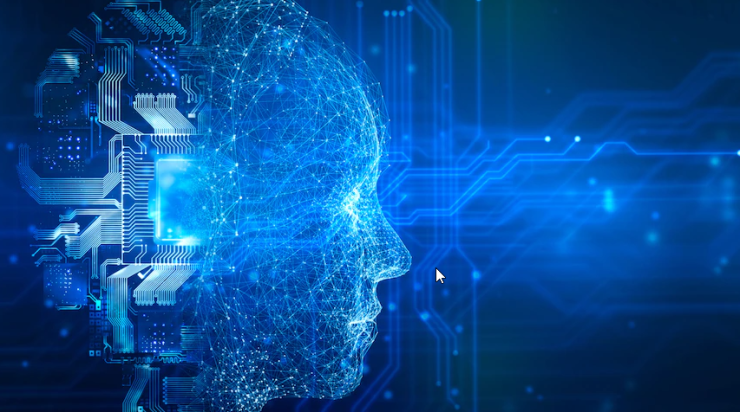Table of Contents
Immediate Edge, the exciting combination of quantum computing and artificial intelligence, has the potential to revolutionize the futures market as we know it. With its superior processing power and advanced algorithms, Immediate Edge could unlock new levels of accuracy and speed in predictions and trading strategies. In this article, we will explore the various aspects of Immediate Edge and its potential impact on the futures market.

Understanding Immediate Edge
Before delving into the specifics, it's important to grasp the basics of Immediate Edge. Quantum computing operates based on quantum bits, or qubits, which have the property of existing in multiple states simultaneously. This parallel processing capability allows quantum computers to handle complex calculations at speeds that traditional computers can only dream of.
Quantum computing is a revolutionary technology that has the potential to transform various fields, including artificial intelligence. By harnessing the power of quantum mechanics, quantum computers can perform computations in ways that were previously unimaginable. The concept of qubits, which can exist in multiple states simultaneously, opens up new possibilities for solving complex problems and optimizing algorithms.
The Basics of Quantum Computing
Quantum computers rely on principles of quantum mechanics, such as superposition and entanglement, to perform computations. Instead of using traditional bits, which can represent either a 0 or a 1, qubits can exist in a state of 0, 1, or a superposition of both states simultaneously. This unique property enables quantum computers to solve certain problems exponentially faster than classical computers.
Superposition is a fundamental concept in quantum mechanics, allowing qubits to be in a combination of 0 and 1 states. This means that a qubit can represent not just one value, but a range of possibilities simultaneously. Entanglement, on the other hand, is a phenomenon where two or more qubits become correlated in such a way that the state of one qubit affects the state of the other, regardless of the distance between them. These principles form the building blocks of quantum computing and enable its remarkable computational power.
However, building and maintaining stable qubits is a significant technical challenge. Qubits are sensitive to environmental disturbances, and even the slightest interference can cause errors in computations, making their practical implementation difficult. Scientists and researchers are actively working on developing error correction techniques and improving qubit stability to overcome these challenges.
The Intersection of AI and Quantum Computing
Artificial intelligence, on the other hand, is a rapidly evolving field that focuses on developing intelligent machines capable of replicating human cognition and decision-making processes. By combining AI algorithms with the immense processing power of quantum computers, Immediate Edge has the potential to solve complex problems that were previously unsolvable in practical timeframes.
Immediate Edge opens up new avenues for advancing machine learning algorithms and enhancing the capabilities of AI systems. The ability to process vast amounts of data and perform complex calculations simultaneously can significantly accelerate the training and optimization of AI models. This, in turn, can lead to breakthroughs in various domains, such as drug discovery, optimization problems, and pattern recognition.
Researchers are exploring different ways to leverage the power of quantum computing in AI applications. One approach is to use quantum algorithms to enhance the efficiency of classical machine learning algorithms. Another approach is to develop entirely new quantum machine learning algorithms that take advantage of the unique properties of qubits. These approaches hold great promise for pushing the boundaries of AI and unlocking new possibilities for solving complex problems.
In conclusion, Immediate Edge represents a convergence of two groundbreaking technologies - quantum computing and artificial intelligence. By combining the power of quantum mechanics with the capabilities of AI, Immediate Edge has the potential to revolutionize various industries and solve problems that were previously considered unsolvable. As research and development in this field continue to progress, we can expect exciting advancements and new applications that will shape the future of computing.
The Current State of the Futures Market
Now, let's shift our focus to the current state of the futures market. The futures market is a financial marketplace where participants can buy or sell contracts for the delivery of specific commodities or financial instruments at a predetermined future date and price.
An Overview of the Futures Market
The futures market plays a vital role in facilitating price discovery and risk management. It provides a platform for participants, such as producers, consumers, and speculators, to hedge against potential price fluctuations and manage their exposure to market volatility.
The Role of AI in the Futures Market
Artificial intelligence has already made significant inroads into the futures market. AI-driven algorithms are widely used for data analysis, pattern recognition, and automated trading systems. These algorithms process vast amounts of historical and real-time data, identifying profitable trading opportunities and executing trades with lightning-fast speed.
Immediate Edge and Predictive Analysis
One area where many believe in Immediate Edge is its potential in predictive analysis. By harnessing the processing power of quantum computing combined with AI algorithms, Immediate Edge could transform market forecasting, elevating prediction accuracy to unprecedented levels.
The Power of Quantum Computing in Predictions
Quantum computers have the ability to process an enormous amount of data simultaneously, allowing for more intricate and complex models. This has the potential to uncover hidden patterns and correlations in financial data that may not be apparent to classical computers. As a result, Immediate Edge could provide traders and analysts with more accurate and robust predictions.
How Immediate Edge Could Improve Market Forecasting
Integrated with AI algorithms, Immediate Edge has the potential to improve market forecasting by analyzing vast datasets and generating predictions with unprecedented accuracy. By considering a multitude of variables and their interdependencies, Immediate Edge-powered systems can deliver real-time insights that may give traders a significant edge in decision-making.
Potential Impacts of Immediate Edge on the Futures Market
With the integration of Immediate Edge into the futures market, traders and market participants may experience a range of potential impacts.
Enhancing Trading Strategies with Immediate Edge
The advanced processing power of quantum computers can enable traders to develop more sophisticated and effective trading strategies. By considering a wider array of factors and conducting complex calculations, Immediate Edge-powered trading algorithms can potentially optimize trading decisions and increase profits.
Immediate Edge and Risk Management
Risk management is a crucial aspect of futures trading. Immediate Edge offers the potential to develop advanced risk models that can more accurately assess and mitigate various market risks. This enhanced risk analysis can help traders protect their investments and make more informed decisions.
Challenges and Limitations of Immediate Edge in the Futures Market
As promising as Immediate Edge sounds, there are several challenges and limitations that must be overcome for its effective implementation in the futures market.
Technological Hurdles
One of the primary obstacles is the development of stable and reliable qubits. Quantum computers are highly sensitive to external disturbances, and errors in computations can occur due to decoherence or noise. Overcoming these technological hurdles and achieving practical quantum computers that can handle complex financial calculations remains a significant challenge.
Ethical and Regulatory Considerations
As Immediate Edge evolves, ethical and regulatory considerations will play a crucial role. The use of advanced AI algorithms in financial markets raises questions about transparency, fairness, and accountability. Developing appropriate ethical frameworks and regulations to ensure the responsible use of Immediate Edge in the futures market will be vital.
In conclusion, Immediate Edge has the potential to reshape the future of the futures market. By leveraging the immense processing power of quantum computers and the intelligence of AI algorithms, Immediate Edge can enhance predictions, optimize trading strategies, and improve risk management. However, overcoming technological obstacles and addressing ethical and regulatory concerns are critical for the successful integration of Immediate Edge into the futures market. As this exciting technology develops, market participants must stay vigilant and adapt to the new possibilities and challenges that Immediate Edge presents.




















Comments